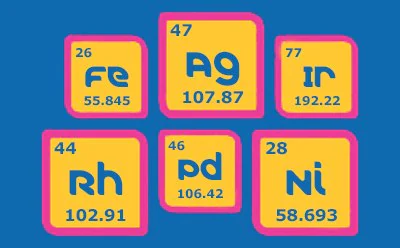Transition Metal Catalysts
Catalysts
Transition Metal Catalysts

The field of catalysis is a wide and diverse field that attempts to emulate the refined function of enzymes, nature′s own catalysts. Transition metal catalysts have the capability to easily lend or take electrons from other molecules, making them excellent catalysts. One attractive feature of catalysis is that the catalytic species is not consumed during the chemical transformation. Catalysis by metals can be further subdivided into heterogeneous metal catalysis or homogeneous metal catalysis. Within the field of transition metals chemistry, there are several classes of transformations that have become prevalent in synthetic, and increasingly non-synthetic, chemistry. These methods are named after the laboratories from which they were developed and include but are not limited to: Stille, Buchwald–Hartwig, Negishi, Heck, Miyaura–Suzuki, and Sonogashira.
We supply a large variety of catalysts and metals that are of increasing importance to synthetic organic chemists. Our extensive portfolio of transition metal catalysts covers the majority of the transition metal block. Some of the more prominent metal catalysts are described below.


